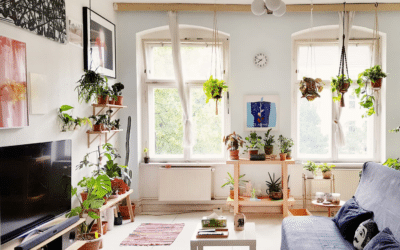The HVAC industry has evolved to a great extent right now and it is benefiting both residential and commercial infrastructures. Whether your expectation is energy efficiency, multiple climate controls, or temperature precision, modern heating and cooling system assemblies can serve the purpose in all cases. All you need to know is which type of HVAC system suits best the targeted building. In order to make it convenient for everyone, we have assorted some useful information below.
Popular Heating and Cooling Systems To Maintain Indoor Temperature
Furnaces
A furnace HVAC (Heating, Ventilation, and Air Conditioning) system is a central heating system that uses a furnace to heat air and distribute it throughout a home or building. Furnaces can use natural gas, propane, oil, or electricity as fuel sources.
The basic components of a furnace HVAC system include:-
- Furnace
- Thermostat to control the temperature,
- Duct system to distribute the heated air
- Return duct to bring the cool air back to the furnace.
The furnace has a heat exchanger that warms the air, which is then blown into the duct system by a fan. The heated air is then distributed throughout the home or building through vents or registers.
Boilers
Boiler systems are often used in combination with radiators, which distribute heat by radiating it into the room. The heated water is either circulated through radiators or radiant floor systems to transfer heat to the living space.
In HVAC systems that use boilers, the boiler is often the primary source of heat, although some systems also incorporate other heating sources, such as electric heaters or heat pumps.
The primary components of a boiler system are:-
- Pipes and radiators
- A circulator pump to distribute the heat
- Thermostat to control the temperature
Heat pumps
The heat pump operates by drawing heat from the air or ground outside of a building and transferring it inside to provide warmth during the heating season. In the summer, the process can be reversed to transfer heat from the inside of the building to the outside, providing cooling. Heat pump HVAC systems are known for their efficiency, as they use less energy to move heat than they do to generate it.
There are two main types of heat pumps i.e.
- Air-source heat pumps
- Ground-source (geothermal) heat pumps
These pumps work as a standalone heating and cooling system, or they can be combined with supplementary heating sources, such as electric resistance heaters or boilers, to provide backup heat during periods of extremely cold weather. These are among the HVAC technologies requiring the least heating and cooling system repairs work.
Ductless mini-split systems
Ductless mini-split systems consist of an outdoor unit that is connected to one or more indoor units through a small hole in the wall. They are a good option for homes or buildings that don’t have ductwork, or for additions or rooms that need to be heated or cooled separately from the rest of the building. A ductless mini-split system, also known as a ductless heat pump doesn’t require ductwork to distribute cooled or heated air throughout a building. Instead, it consists of an outdoor unit that is connected to one or more indoor units through a small conduit.
Ductless mini-split systems are ideal for heating and cooling individual rooms or zones within a building. Each indoor unit can be controlled separately, allowing for customized temperature control in different areas of the building. This heating system installation is possible in a variety of locations, including living rooms, bedrooms, and sunrooms because of the compact size.
Central and window air conditioning
Central air conditioning systems use a network of ducts to distribute cool air throughout the building and typically consist of an outdoor unit (compressor/condenser) and an indoor unit (evaporator coil) that are connected by pipes and wires. Window air conditioning is a type of air conditioning unit that is designed to be installed in a single window or through a wall. Unlike central air conditioning systems, window air conditioners do not require ductwork to distribute cooled air, and instead, cool only the room in which they are installed.
In both cooling system models, the outdoor unit pumps refrigerant to the indoor unit, where it evaporates and cools the air. The cooled air is then distributed throughout the building through a network of ducts, which are connected to vents in each room.
Relevance to the targeted area
Central air conditioning systems and ductless mini split installation systems are typically more efficient and effective than other types of cooling systems, as they can cool large areas with a single system, or they can allow for zoning of every room in the building and more control over the utility usage. They are also more energy-efficient, as the cooing can be efficiently circulated throughout the entire building and into each room.
Window air conditioners are typically less expensive and easier to install than central air conditioning systems, making them a popular choice for small apartments, bedrooms, and other areas where only a single room needs to be cooled.
When looking for HVAC contractors, make sure they are proficient in working with all types of heating and cooling systems. Also, they must have enough experience to repair and suggest the right HVAC system in case of replacement



0 Comments